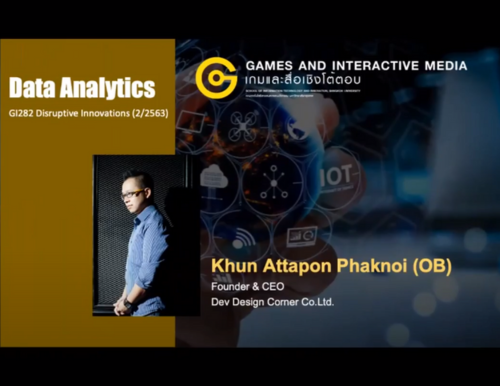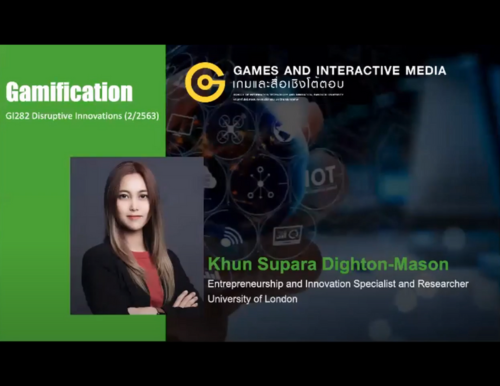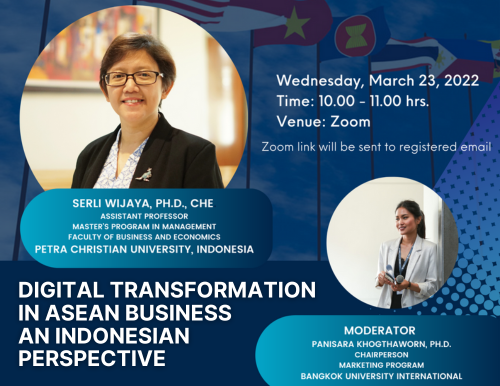Get inside the customer's mind refers to the process of understanding and empathizing with the thoughts, feelings, preferences, and behaviors of customers or clients. It involves gaining insight into their motivations, needs, and desires in order to better serve them, meet their expectations, and create products or services that resonate with them. By Wichai Pornpratang
การบรรยายเกี่ยวกับการโจมตีทางไซเบอร์ (Cyber Attack) เป็นภัยอันตรายที่อาจเกิดขึ้นกับระบบคอมพิวเตอร์ เครือข่าย และข้อมูลทางอิเล็กทรอนิกส์ โดยสามารถก่อให้เกิดความเสียหายกับองค์กร เช่น การสูญหายของข้อมูล การเรียกค่าไถ่ โดยในปัจจุบันมีการโจมตีทางไซเบอร์ในหลายรูปแบบด้วยกัน บรรยายโดย คุณอลงกรณ์ วงศ์แหยม
การบรรยายเกี่ยวกับการโจมตีทางไซเบอร์ (Cyber Attack) เป็นภัยอันตรายที่อาจเกิดขึ้นกับระบบคอมพิวเตอร์ เครือข่าย และข้อมูลทางอิเล็กทรอนิกส์ โดยสามารถก่อให้เกิดความเสียหายกับองค์กร เช่น การสูญหายของข้อมูล การเรียกค่าไถ่ โดยในปัจจุบันมีการโจมตีทางไซเบอร์ในหลายรูปแบบด้วยกัน บรรยายโดย คุณอลงกรณ์ วงศ์แหยม
การบรรยายเกี่ยวกับการโจมตีทางไซเบอร์ (Cyber Attack) เป็นภัยอันตรายที่อาจเกิดขึ้นกับระบบคอมพิวเตอร์ เครือข่าย และข้อมูลทางอิเล็กทรอนิกส์ โดยสามารถก่อให้เกิดความเสียหายกับองค์กร เช่น การสูญหายของข้อมูล การเรียกค่าไถ่ โดยในปัจจุบันมีการโจมตีทางไซเบอร์ในหลายรูปแบบด้วยกัน บรรยายโดย คุณอลงกรณ์ วงศ์แหยม
How to write a resume. Good preparing resume for increasing opportunity to interview. The importance step for present who are you? Why this job is suitable for you.
การบรรยายแบบออนไลน์ เรื่อง Data Analytics Trends
โดย Khun Attapon Paknoi, Entrepreneurship and Innovation, Specialist and Researcher, University of London
เมื่อวันที่ 3 มีนาคม 2564
เป็นส่วนหนึ่งของวิชา GI282 Disruptive Innovation ปีการศึกษา 2563
การบรรยายแบบออนไลน์ เรื่อง Gamification โดย Khun Supara Dighton-Mason, Entrepreneurship and Innovation, Specialist and Researcher, University of London เมื่อวันที่ 17 กุมภาพันธ์ 2564 เป็นส่วนหนึ่งของวิชา GI282 Disruptive Innovation ปีการศึกษา 2563
Special talk session
Digital Transformation in ASEAN Business: An Indonesian Perspective
By Serli Wijaya
Assistant Professor, Master Program in Management, Faculty of Business and Economics, Petra Christain University, Indonesia
on March 23, 2022





